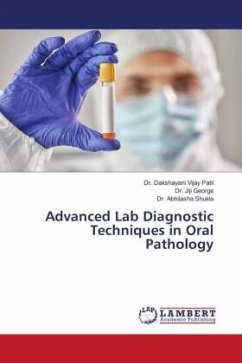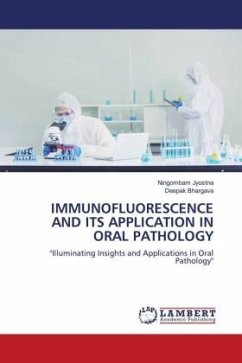
Ghost cells: A mysterious trail to Oral Pathology
A microscopic dilemma
Versandkostenfrei!
Versandfertig in 6-10 Tagen
40,99 €
inkl. MwSt.

PAYBACK Punkte
20 °P sammeln!
The concept of single cell to the multicellular stage of humans is periodically transforming with increasing knowledge about the individual mechanism of cell and its structure. Cellular identities have been in the past based on structural and functionality of them. Ghost cells has been ridden by controversies due to their functionality and appearance. The term ghost is used for the faint/ shadowy figure lacking the customary substance of reality. The ghost cells in odontogenic lesions are the enlarged epithelial cells with astrayed nuclei, leaving a faint outline of the original nuclei. Their ...
The concept of single cell to the multicellular stage of humans is periodically transforming with increasing knowledge about the individual mechanism of cell and its structure. Cellular identities have been in the past based on structural and functionality of them. Ghost cells has been ridden by controversies due to their functionality and appearance. The term ghost is used for the faint/ shadowy figure lacking the customary substance of reality. The ghost cells in odontogenic lesions are the enlarged epithelial cells with astrayed nuclei, leaving a faint outline of the original nuclei. Their presence signifies primitive nature of lesions in head and neck region, suggesting aggressive nature or the prognostic implication of these features. Hence, characterization of head and neck lesions with the presence of ghost cells needs to be undertaken with focus on their clinical presentation, radiographic and histopathological variation and prognostic relevance.












